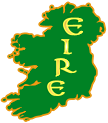Lesson 5 Articles
Genealogy: Crests, Coat of Arms and Surname Origins?
February 24, 2012 by ramona
Filed under Articles, Genealogy and Surnames, Introduction to Genealogy, Latest News, Lesson 5 Articles

Have you ever searched for your surname in Google and come across websites for Family Crests, Coat of Arms and Surname Origins? If you are a genealogy beginner, you may even have gone to the website for information on your ancestors.
The real question here is how much value do these types of websites offer as a reliable source of information for your family tree research?
Surname origin websites, although highly entertaining and interesting, rarely have the information you really need. Many of them sell pre-written generic genealogies based on surname origin. Sadly, these genealogies often have nothing to do with sound family tree research and they can be misleading to those new to genealogy.
Surname Origins
For our first example, let us look at surname origin or surname history sites. Using the name Clegg in a Google search and randomly picking three sites, I find the following.
- The first site states that the Clegg surname “makes an impressive claim to being one of the oldest Anglo-Saxon surnames on record”. Then goes on to say the origins for the name hail from the “Rhine valley as far north east as Denmark”
- The second site surmises the Clegg surname is of English origin and comes from the Old Norse word “Kleggi” meaning at the foot of Owl Hill.
- A third surname origin website tells us that Clegg is an anglicized version of the Gaelic name “Mac Liaig(h)” which evolved into “Claque” and from there to Clegg. This site tells us that the name originates on the Isle of Mann.
From the above examples it is easy to see that while there may be a great deal of research and at least a grain of truth to each example, ultimately the information is contradictory and confusing. Therefore, while we all would like to know the origin of our family names Genealogy Beginner advises that it is best to regard these types of genealogy websites with a wee bit of skepticism.
Family Crests and Coat of Arms
Crests
A family crest historically is part of a family Coat of Arms or heraldry. It is called a crest because it was mounted on the top of a helm above the shield on a Coat of Arms. By the 13th century, a crest was used as a means of identification in tourney (think the movie – A Knights Tale) or on the battlefield.
Coat of Arms
A Coat of Arms also began as a way to identify an individual on the battlefield. Coat of Arms literally gets its name from a coat worn over armor or chain mail and was used initially to protect the armor or keep it cool under the hot sun during the crusades. Later it was decorated with identifying colors and designs in order to help distinguish friend from foe.
Ultimately a Coat of Arms is:
- An Armorial right that must be granted under due authority
- Usually the Crown or State
- Some governments (Canada) have the authority to grant the right.
Alternately, the right to bear arms can come from decent or “by virtue of ancestral right”.
What all this really means is that a coat of arms belongs to a direct family line and any website that tries to sell you your Coats of Arms is selling you a generic product that may or may not have anything to do with your lineage.
Overall, there is no real harm in surname origin or Coat or Arms websites so long as you are not misled into believing that they are an authority on your individual family tree. If you really want to know the origin of your surname (or whether or not there is a Coat of Arms associated with it) you will have to put the hard work into tracing your family tree as far back as you can, using well-established genealogy research techniques.
For more information on surname research, check out Genealogy Beginners Lesson Five: What’s in a Name?
Image Credit: Ramona Hartley
Broaden Your Ancestor’s Name Search
September 11, 2008 by Chris
Filed under Articles, Genealogy and Surnames, Introduction to Genealogy, Lesson 5 Articles, Public Records
 To trace the Irish origins of a client’s Irish grandfather, I recently searched a number of government record databases. The Irish grandfather’s name was Thomas Hogan. Feeling confident in pinpointing the specific person, I entered the first name, Thomas, and the family name (surname), Hogan, in the search fields of the searchable database. My confidence quickly diminished, when, unfortunately, the search results did not produce the one and only Thomas Hogan I was looking for. Being patient and persistent, I took a chance and broadened the search by simply entering the family name (surname), Hogan, in the search field.
To trace the Irish origins of a client’s Irish grandfather, I recently searched a number of government record databases. The Irish grandfather’s name was Thomas Hogan. Feeling confident in pinpointing the specific person, I entered the first name, Thomas, and the family name (surname), Hogan, in the search fields of the searchable database. My confidence quickly diminished, when, unfortunately, the search results did not produce the one and only Thomas Hogan I was looking for. Being patient and persistent, I took a chance and broadened the search by simply entering the family name (surname), Hogan, in the search field.
Although, as you can guess, this wider search produced hundreds of records, I hoped that it might uncover the correct Thomas Hogan.
Eureka! Lo and behold, the “Hogan only” search produced a record for a “Thos. Hogan”, the correct one, the grandfather I was looking for. The lesson learned: before giving up and suspending your search for a specific first name-last name combination, broaden your search to include an abbreviated first name. You may ultimately find the person you are looking for!
Footnote: To quicken the creation of a written form or record, a government official sometimes abbreviated the first name of a person in that form or record. Today, searchable electronic databases contain those same abbreviations.
See more Irish family history articles and lessons learned in earlier posts below and in the archives.
…
Where to Next?
Blank Family Tree with Step-by-Step Instructions
…
How to Research Your Family Name
May 18, 2008 by Chris
Filed under Genealogy and Surnames, Getting Started, Introduction to Genealogy, Lesson 5 Articles
 By Dakota Caudilla
By Dakota Caudilla
You’ll be surprised with the kind of information you’ll unearth when you do a research on your own family name. People you’ve never known existed, long-lost relatives, and friends who share the same lineage as you! This is what researching your own surname can do for you. If you’re not ready for some surprise findings, you’re better off leaving all this researching to others in your family.
Researching your own surname can be done through different methods. For one thing, the most popular among all the other methods of researching your own family surname is through the Internet. The wide availability, freedom of use and flexibility of the internet makes it the most popular genealogical research tool known to humankind today!
Try websites like http://www.genealogy.com and you’ll see what we mean. By typing in your surname or your ancestor’s first and last name, you’ll come up with a whole list of possible family members that you can easily fill up your family tree. These tools are generally easy to use and some websites even have communication tools whereby you can contact the possible relative directly too. These websites contain hundreds of millions of family names in their database to help people find long-lost family members.
